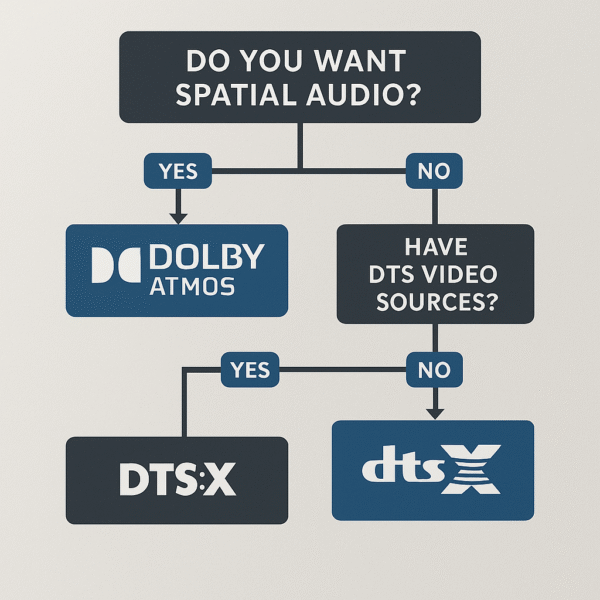When building a premium home theater setup in 2025, one of the most important decisions is choosing your surround sound format. The battle between Dolby Atmos vs DTS:X continues to shape how we experience movies, games, and music. Both are advanced, object-based audio technologies, but each has distinct advantages depending on your room setup, soundbar, or AV receiver.
In this guide, we’ll dive into the technical differences, compare supported devices, and help you decide which format fits your lifestyle and audio preferences.
What Is Object-Based Audio?
Unlike traditional surround formats that assign sounds to specific channels, object-based audio allows sound designers to place audio elements (objects) in a 3D space. This means that instead of hearing a plane fly from left to right, you can hear it soar overhead, behind you, and fade into the distance.
Dolby Atmos and DTS:X both use this object-based approach, enhancing immersion far beyond legacy formats like Dolby Digital or DTS-HD.
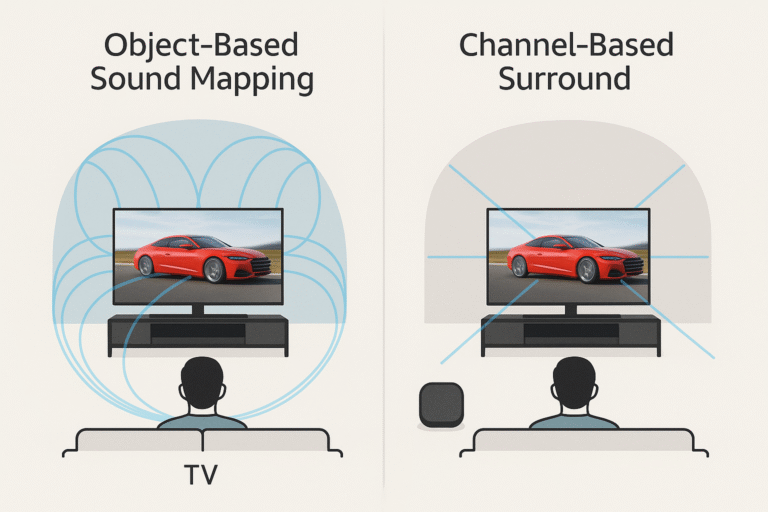
Key Differences Between Dolby Atmos and DTS:X
| Feature | Dolby Atmos | DTS:X |
|---|---|---|
| Audio Type | Object-based | Object-based |
| Height Channel Support | Yes (required for full experience) | Yes (optional) |
| Speaker Flexibility | Fixed layout (recommended) | Flexible layout |
| Streaming Compatibility | Widespread (Netflix, Disney+) | Less common on streaming |
| Device Compatibility | Broad soundbar + receiver support | Mostly AV receivers and higher-end |
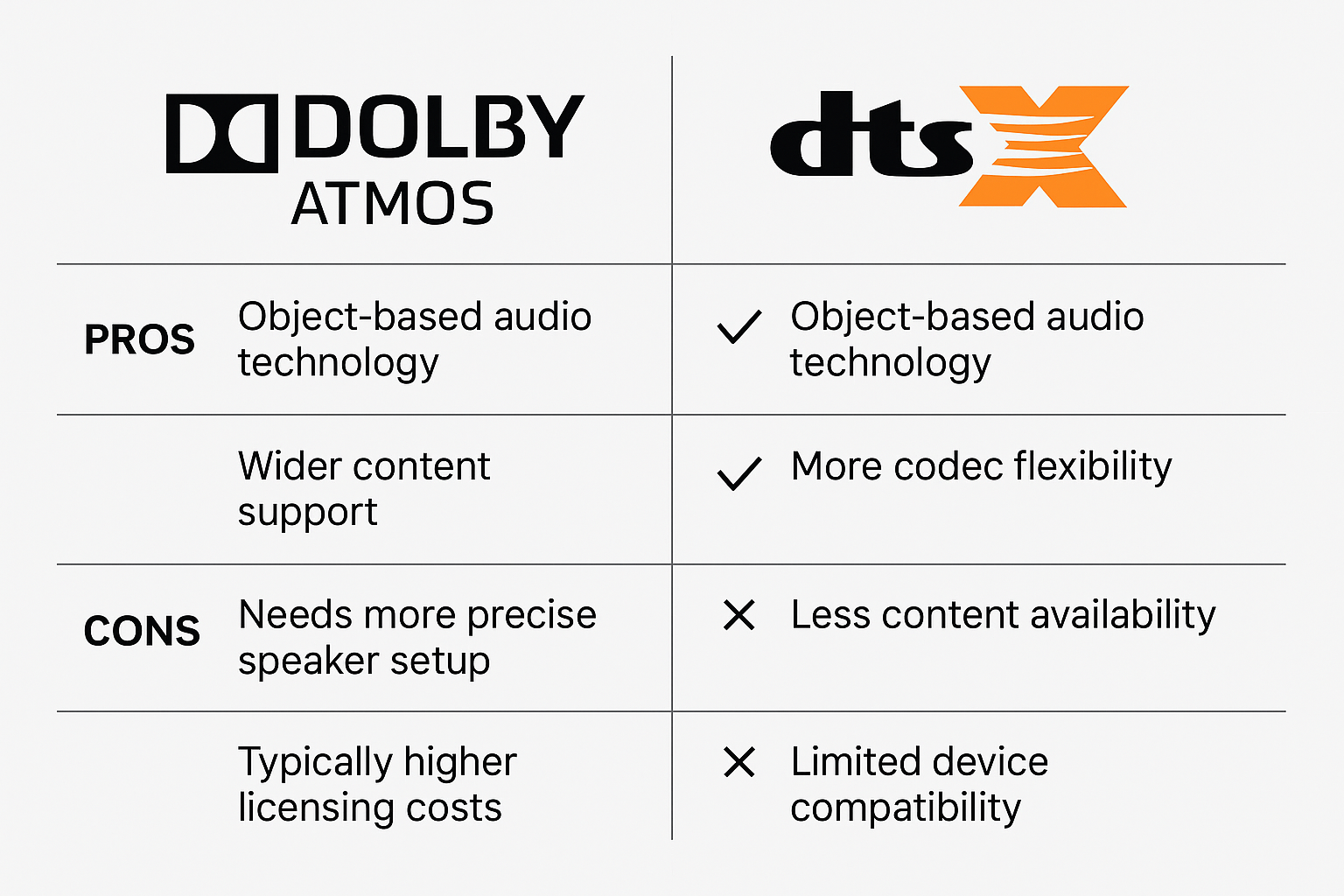
Dolby Atmos is typically more common in streaming platforms and soundbars, while DTS:X offers more flexibility in speaker placement and custom installs.
Compatibility With Devices in 2025
Dolby Atmos Soundbars:
Sonos Arc
Samsung Q700C, Q990C
Bose Smart Soundbar 900
Vizio Elevate
DTS:X Compatible Systems:
Denon AVR-X3800H
Yamaha RX-V6A
LG SN11RG Soundbar
If you plan to use a soundbar, Dolby Atmos is the go-to choice, especially with growing support for virtual Atmos that mimics ceiling speakers using directional tweeters.
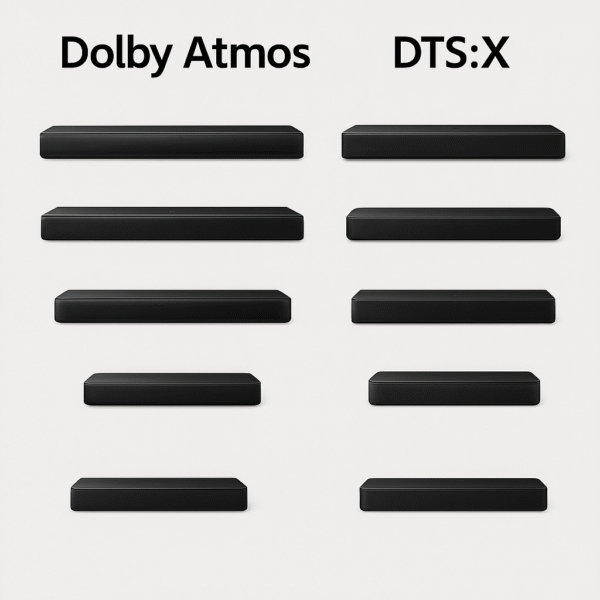
Atmos vs DTS:X for Gaming
Dolby Atmos: Supported on Xbox Series X, some Windows 11 PCs, and compatible titles like Call of Duty, Forza Horizon, and Gears 5.
DTS:X: Available with DTS Headphone:X for PC gaming and supported by select AVRs.
Winner for gaming: Dolby Atmos, thanks to broader console integration and immersive vertical sound effects.
Movie Watching Experience Dolby Atmos:
Consistently supported on major streaming platforms
Includes height channels for overhead effects
Great for action scenes, weather effects, and expansive environments
DTS:X:
Often preferred for Blu-ray discs and physical media
Audio clarity and speech enhancement are top-tier
Less reliant on ceiling channels
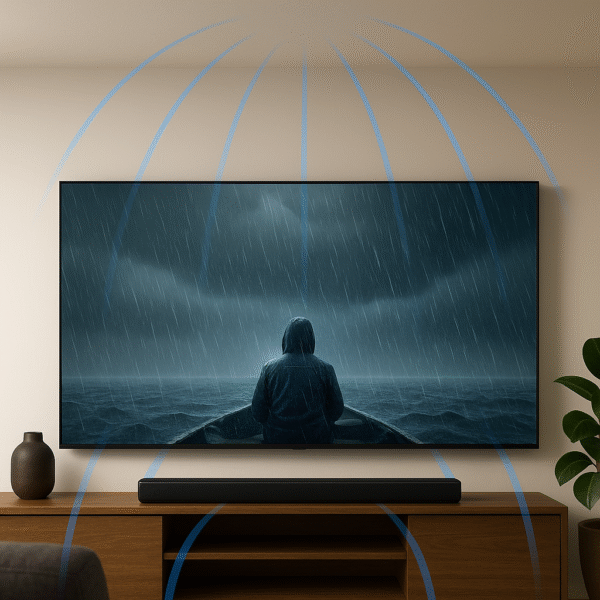
Which Is Better for Small Rooms and Apartments?
Dolby Atmos can still work well in small rooms, especially with virtualized soundbars like the Sonos Beam Gen 2 or Samsung Q600C. DTS:X, on the other hand, shines in custom installs with awkward room layouts due to its speaker mapping flexibility.
Best pick for apartments: Dolby Atmos via soundbars with upward-firing drivers
Which Should You Choose?
Choose Dolby Atmos if you:
Stream movies on Netflix, Disney+, Apple TV
Want compatibility with soundbars and compact systems
Prefer immersive gaming with Xbox Series X or PC
Choose DTS:X if you:
Use physical media like Blu-rays
Have a high-end AVR and speaker setup
Need flexible speaker layout options
